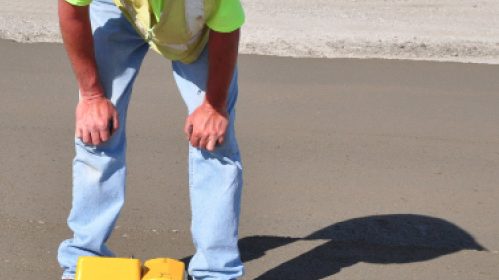The new ASTM International C1856/C1856M–17 Standard Practice for Fabricating and Testing Specimens of Ultra-High Performance Concrete covers requisite procedures for a material increasingly specified in bridge deck closures; thin-section architectural precast concrete elements; and, high-end, decorative furnishings or components.
|
|
| ASTM C1849 will give practitioners a better handle on roller compacted concrete pavement mix properties ahead of placement and field density testing. |
 |
| In its July/August 2017 Innovator report, “Using Ultra-High Performance Concrete to Build Bridges Better,” the Federal Highway Administration notes how UHPC affords small, simple-to-construct connections that use less concrete than conventional ones. PHOTO: Federal Highway Administration |
Developed by ASTM C09 Committee on Concrete and Concrete Aggregates Subcommittee C09.61 on Testing for Strength, the standard details fresh mix property measurement, plus specimen preparation and testing for concretes with 17,000 psi and higher design strengths; nominal maximum size aggregate of less than 3/16 in., and 8- to 10-in. flow as measured by flow table test.
Following the C1856 release, C09 has scheduled publication of C1849/C1849M, Test Method for Density and Air Content (Pressure Method) of Freshly Mixed Roller-Compacted Concrete. The document will especially suit labs designing and proportioning RCC mixtures, plus quality control/assurance inspectors verifying pavement specification compliance.
“There is currently no ASTM standard for determining air content of RCC. The air-content value is needed to proportion mixtures by the absolute volume method and, if applicable, to adjust air content to within the specified range,” says C09 member Dennis Clute of the U.S. Department of Agriculture’s National Resources Conservation Service. ASTM C1849/C1849M includes measurement of mixture density, he adds, which is helpful with troubleshooting RCC mixture or compaction method problems. — www.astm.org/bookstore
